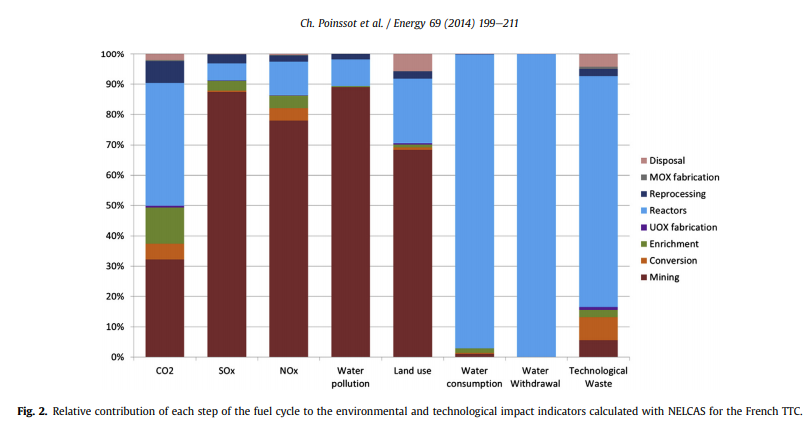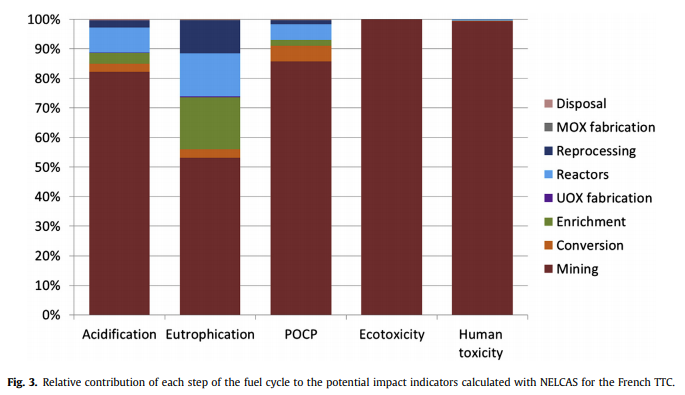
Recently a canister of worms was opened when some nuclear advocates qned the sense of deep geological repositories for disposing of high level nuclear waste. Look, this deserves to be delved into periodically. So once more into the repository my friends.
https://twitter.com/MadiHilly/status/1550148429229211649
All the usual caveats apply. I’m a generalist – not a specialist. I do occasionally get to work with specialists though. I’m gonna drag in info from a range of sources for this #thread. These are my observations and reflections only. Disagreement and/or corrections are welcome 2/
First off let’s recap on the philosophy that drives nuclear waste disposal thinking. There are, I think, two main principles – intergenerational equity and the avoidance of harm. This touchstone IAEA publication describes the main objective as follows www-pub.iaea.org/MTCD/publicati… 3/ 



Seems straightforward. It's nobly intended and I think could be generalised from radioactive waste to all hazardous wastes without drama. I don’t think anyone disagrees with the spirit (?), but it immediately raises the question – what exactly constitutes an undue burden? 4/
I doubt there is a*correct* answer to this. It might be black and white for something which will undeniably impact future livelihoods – like >2 degrees of planetary warming, ozone depletion or air pollution – but managed nuclear wastes? These are simply not in the same league. 5/
Interim storage of high-level waste from nuclear energy has been demonstrated to be extremely safe. There are no known fatalities due to handling or serious environmental releases in over 50 years of operation. Fuel pools and dry casks are simply robust top-notch techs 6/ 



Which gets to the heart of the objection I think. If interim storage is safe and judged to be acceptable for us today, why should it be considered intolerable for people tomorrow? There does seem to be an underlying current of dread-risk fear and radiophobia here. 7/ 

Nonetheless, industry experts judge that interim storage solutions are not up to the job in the truly long term. The final step in the sustainable HLW management is DISPOSAL. This can be in an engineered or natural facility (or combination), that employs multiple barriers 8/
Following decades of research, the current consensus among the international community is that Deep Geologic Repositories (aka Geologic Disposal Facilities) are a sustainable disposal solution. They are, in fact, the universally preferred solution 9/ oecd-nea.org/upload/docs/ap… 

Why are repositories number 1? Just guessing here, but I’d say it’s due to a) it being a mature solution demonstrated for other waste types, b) certain geologies providing an excellent natural barrier, and c) actual evidence of effectiveness from the geological record 10/ 

And quite simply because repositories beat the other available options. That’s right, there are no new ideas under the sun (or earth)! Experts didn’t just choose repositories for the nuisance value or to give antis a weapon. They did their homework 11/ world-nuclear.org/information-li… 

IMHO, those arguing against geologic disposal for HLW do need to argue convincingly for a better disposal strategy. Arguing for no plan does not seem to meet intergeneration equity commitments. Or put another way – hope (in future technology breakthroughs) is not a plan 12/🤞
Interestingly, there is no clear time frame provided by experts for when final disposal needs to occur! There is an unwritten principle that this can be up to the point where interim solutions fail. Deadlines are therefore arbitrary, or driven by societal concerns. 13/
Side note: while this discussion has been philosophical, it became very real for the nuclear industry with the #EUtaxonomy. The criteria set arbitrary requirements on waste repositories, including that all countries must have an HLW GDR by 2050 14/
This is a ham-fisted approach, which ignores the nuances here and doesn’t help meet the 6 environmental objectives of the taxonomy, or sustainability generally. It seems to have been implemented purely to force EU member states to speed up their repository plans. End aside /15
The main difference I can see between industry experts and these advocates is the plan/strategy. The plan is the fundamental assurance of intergenerational equity. But it’s a plan with no fixed date, and like all plans it can, and should, change in light of new developments /16
What makes it a plan and not a dream? Steps taken towards realisation – scientific studies, site selection, professional training etc. This requires financial resources, which is why nuclear plant operators are universally required to set aside funds to pay for disposal /17
I think the plan, evidence of progress and the provision of money to pay for the plan is what makes nuclear energy truly sustainable - not arbitrary DGR deadlines, and not optimism for future tech. A recent UNECE report put it as follows. /18 unece.org/sites/default/… 

Another crucial requirement of the waste plan is that is that it must be coherent with the overall nuclear fuel cycle and technology plan. Those of you jumping up and down and wanting to know why I haven’t talked about reprocessing and advanced nuclear reactors can relax now. /19
It is possible to reprocess nuclear fuel. There are a range of reprocessing techs possible but only one that is currently viable/being practised. It allows the recovery of useful fuel elements (U, Pu) and the possible partitioning of short-lived radioisotopes from long ones /20
Reprocessing allows you to recycle used nuclear fuel, resulting in about 25% extra energy if used in light water reactors (MOX fuel) or orders of magnitude more energy if used to fuel fast reactors – and a dramatic reduction in waste for disposal. I get the excitement here. /21 

But not all countries want to pursue recycling. For starters only 2 countries actually offer this service internationally. Setting up facilities is extremely complex, expensive and exposes a country to international non-proliferation and safeguard scrutiny. /22
And not all countries believe reprocessing offers good value. There is considerable debate over this. It depends partially on the price of natural uranium. It depends on whether you value certain intangibles. The real equalising savings only come when you build the repository /23 

Added to this is that not all operators seem comfortable with the idea of changing the diet of their reactors and operating with MOX fuels. Also not all countries are currently leaping to adopt advanced nuclear reactors, or planning any further reactors in some cases./24
No reprocessing technology is going to be 100% efficient or able to deal with all materials. I have not yet met a reprocessing expert that thinks a DGR isn’t necessary. In fact, France, the poster-child for reprocessing, is developing a DGR for wastes from reprocessing /25
Once more and louder. Reprocessing and advanced reactors do not obviate the need for DGRs. DGRs remain necessary, but the nature of that DGR should change to reflect the fuel cycle. Maybe the repository doesn’t need to be as deep. Maybe boreholes become more viable. Etc. etc /26 

Regardless of whether they opt to reprocess or intend to build fast and other waste burning reactors in the future, countries are going to need a DGR. Those that are not planning to recycle have less reasons for delaying them. Those that get DGRs underway should be applauded /27
So to end, disposal is important and DGRs continue to remain the best means of disposal. Everyone get on with your DGR disposal plans in good time. But that’s not the end. This thread wouldn’t be complete without looking at why these advocates are upset about DGRs /28
The problem is that almost all countries have sucked at making meaningful progress with developing their DGRs. We can name the leading countries on three fingers. Every other country is a laggard or has seen projects blocked by vehement opposition. world-nuclear-news.org/Articles/Obama… /29
The issue is mainly political and not technical. Except where it isn't. Not all countries are the same. Some are small and have very high population densities <cough Singapore>. Not all will have particularly amazing geologies either. This can be a potential deal-breaker /30
Nor do DGRs come cheap – costing billions to 10s of billions USD. They are affected by economies of scale, having substantial fixed costs which don’t alter with the size of the repository. Meaning that countries with small nuclear programmes face proportionally higher costs /31
What irritates me isn’t the need for DGRs but rather the need for each country to develop its own DGR. Note - key treaties already identify nation states as responsible for ultimate management of HLW, but they do not categorically forbid the use of shared repositories. /32
multinational repositories are that rarest of beast. A potential win-win-win solution. A win for countries with small nuclear fleets and/or lack of suitable geologies. A win for host nation which would make profits. A win for the global environment as fewer DGRs are needed /33
Of course they face challenges too, but mainly this is the challenge of public perception/politics and getting any kind of HLW repository underway anywhere in the first place. Multinational repositories strike me as the magic that could open up the global nuclear market. /34 

IMO, multinational repositories could also have the power to dramatically reform the public perception issues around HLW. Overnight It would cease to be something thrust upon unwelcoming communities to being something that certain communities are actively competing for /35
Or we could just leave HLW sitting around in casks for eternity. Or try this space elevator sun-shot thing. Or drop the stuff into deep sea trenches Volcanoes maybe? Feel free to speculate all you want but I think industry will stick with disposal plans in DGRs. Thread ends.
• • •
Missing some Tweet in this thread? You can try to
force a refresh









